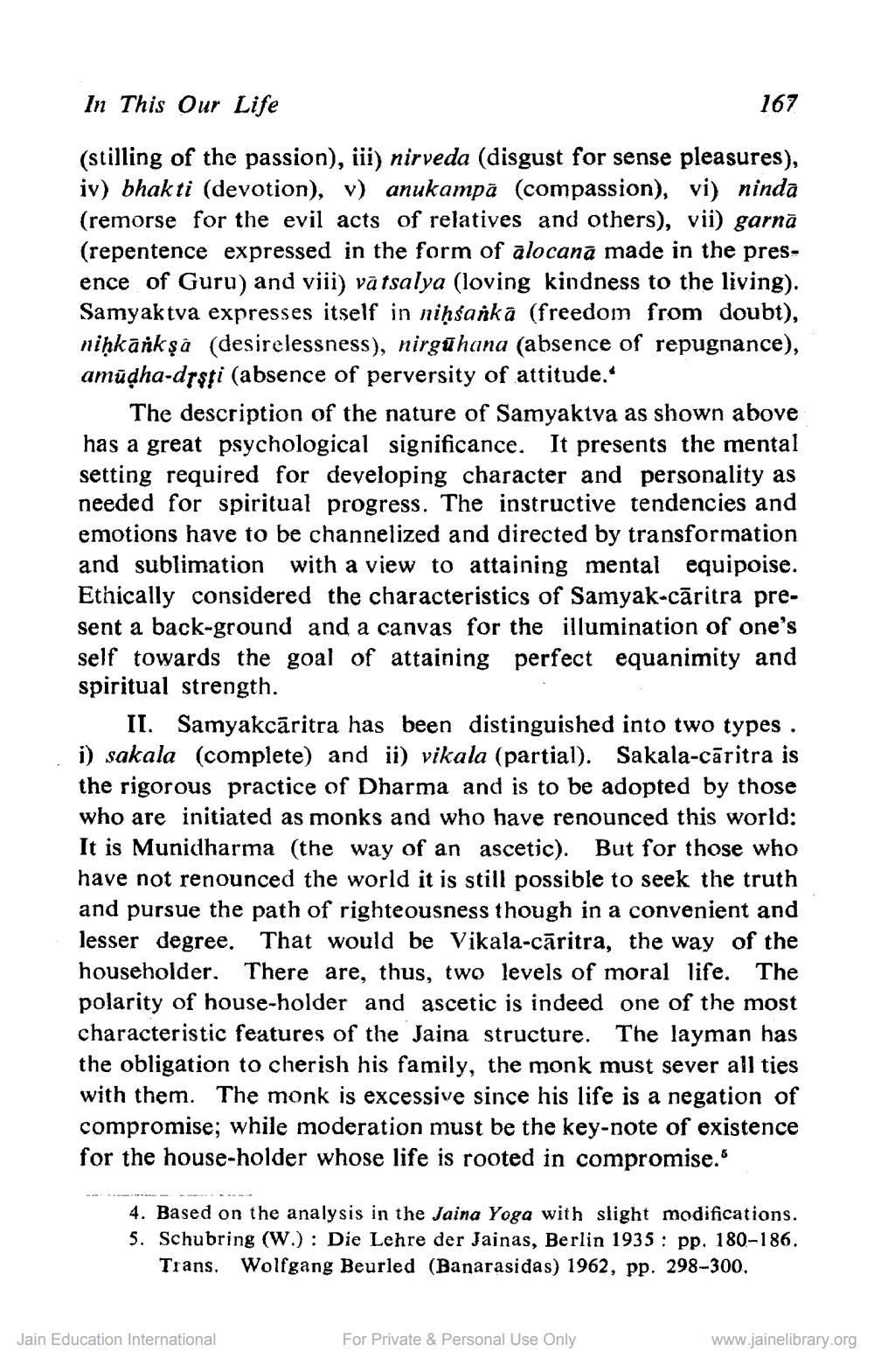________________
In This Our Life
(stilling of the passion), iii) nirveda (disgust for sense pleasures), iv) bhakti (devotion), v) anukampa (compassion), vi) ninda (remorse for the evil acts of relatives and others), vii) garnā (repentence expressed in the form of alocana made in the presence of Guru) and viii) vatsalya (loving kindness to the living). Samyaktva expresses itself in niḥśankā (freedom from doubt), niņkānkṣā (desirelessness), nirgūhana (absence of repugnance), amūḍha-drşti (absence of perversity of attitude.'
The description of the nature of Samyaktva as shown above has a great psychological significance. It presents the mental setting required for developing character and personality as needed for spiritual progress. The instructive tendencies and emotions have to be channelized and directed by transformation and sublimation with a view to attaining mental equipoise. Ethically considered the characteristics of Samyak-cāritra present a back-ground and a canvas for the illumination of one's self towards the goal of attaining perfect equanimity and spiritual strength.
167
II. Samyakcaritra has been distinguished into two types i) sakala (complete) and ii) vikala (partial). Sakala-caritra is the rigorous practice of Dharma and is to be adopted by those who are initiated as monks and who have renounced this world: It is Munidharma (the way of an ascetic). But for those who have not renounced the world it is still possible to seek the truth and pursue the path of righteousness though in a convenient and lesser degree. That would be Vikala-caritra, the way of the householder. There are, thus, two levels of moral life. The polarity of house-holder and ascetic is indeed one of the most characteristic features of the Jaina structure. The layman has the obligation to cherish his family, the monk must sever all ties with them. The monk is excessive since his life is a negation of compromise; while moderation must be the key-note of existence for the house-holder whose life is rooted in compromise."
Jain Education International
4. Based on the analysis in the Jaina Yoga with slight modifications. 5. Schubring (W.): Die Lehre der Jainas, Berlin 1935: pp. 180-186. Trans. Wolfgang Beurled (Banarasidas) 1962, pp. 298-300.
For Private & Personal Use Only
·
www.jainelibrary.org




